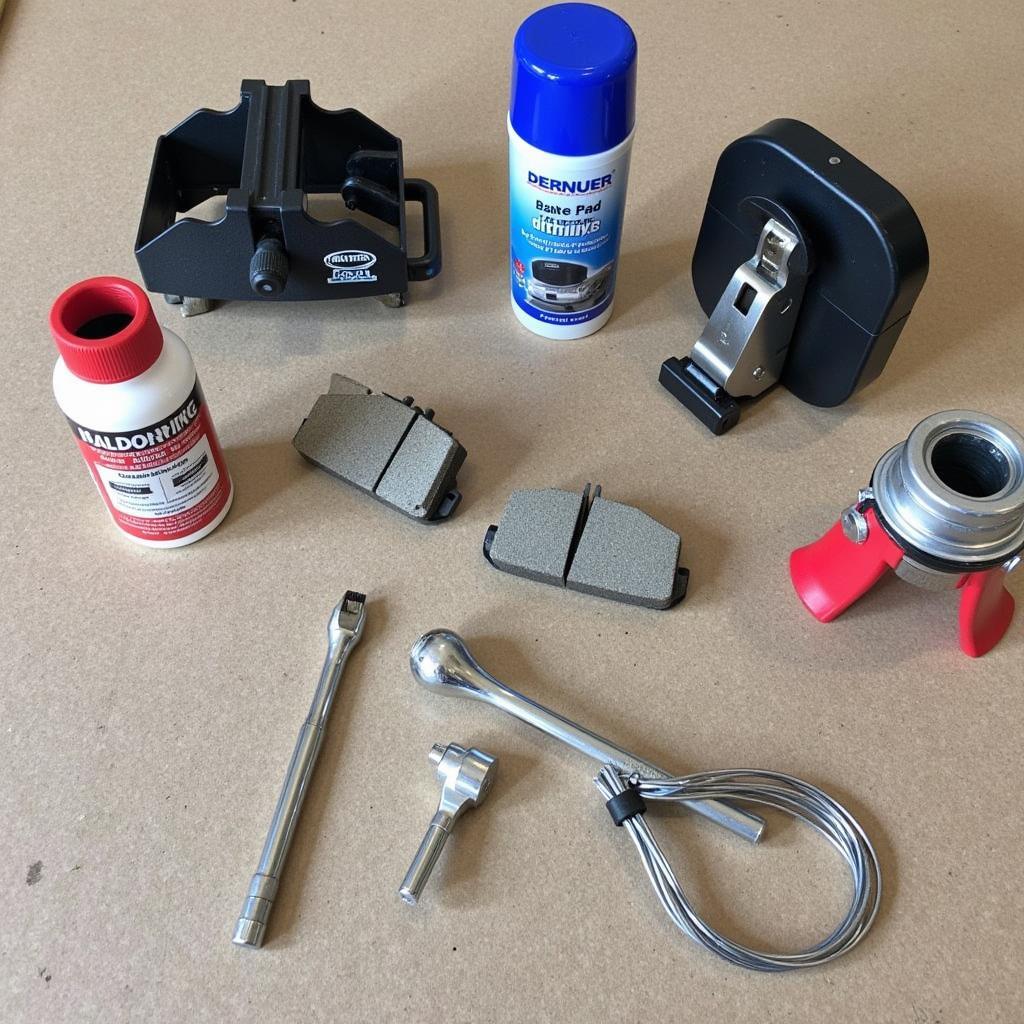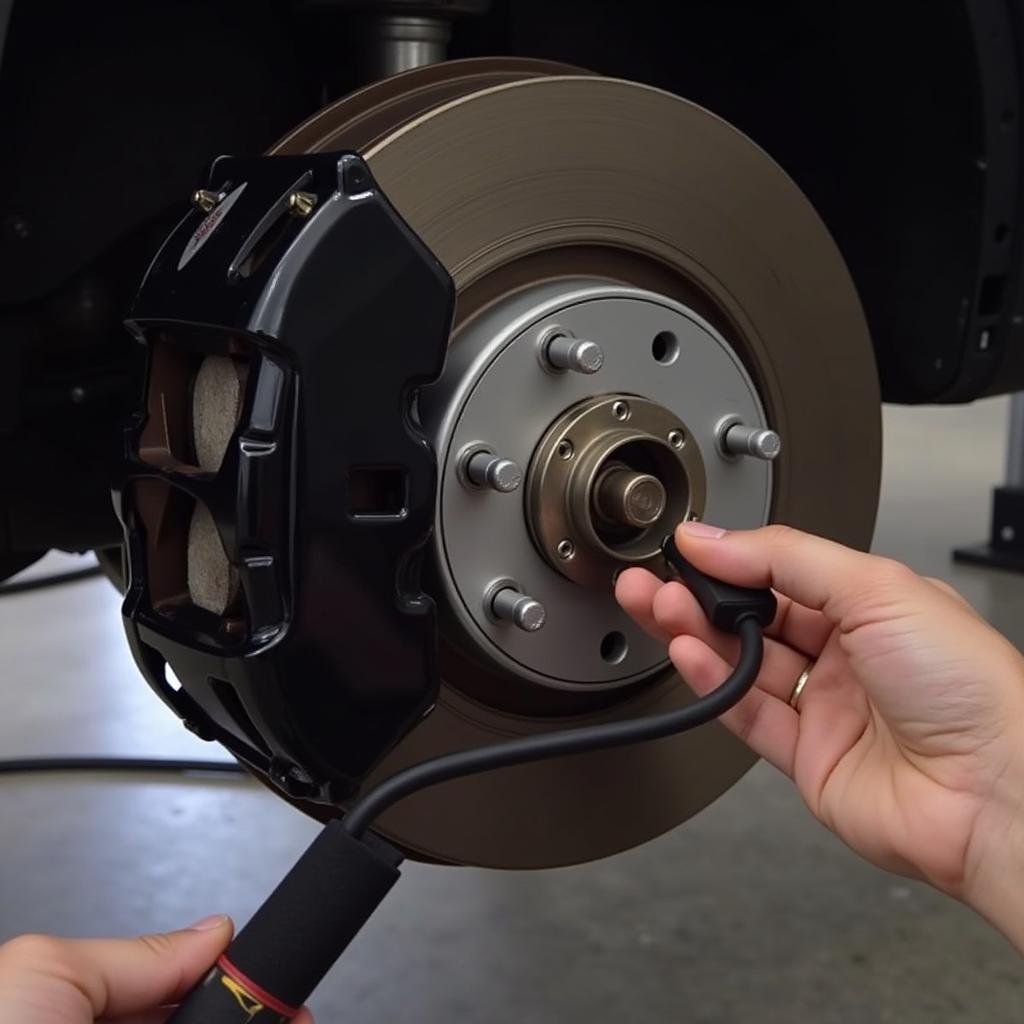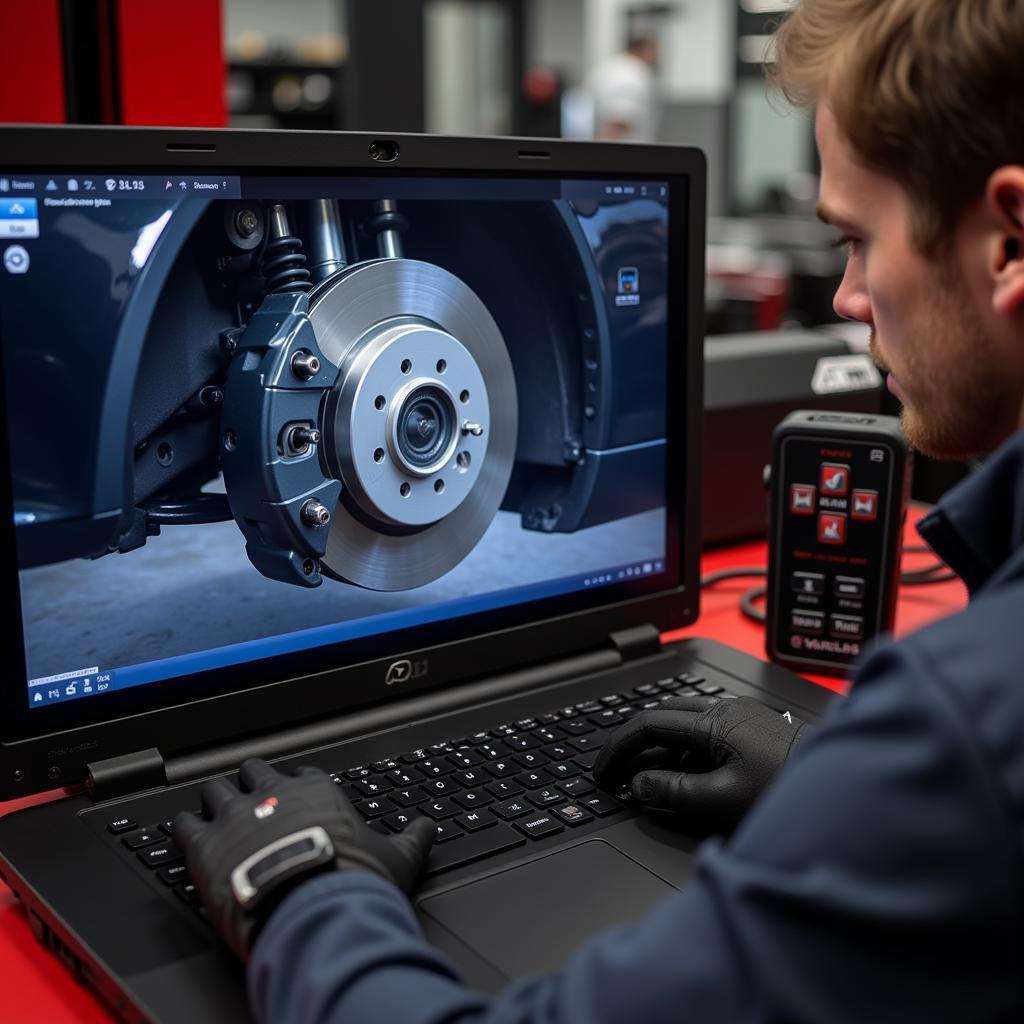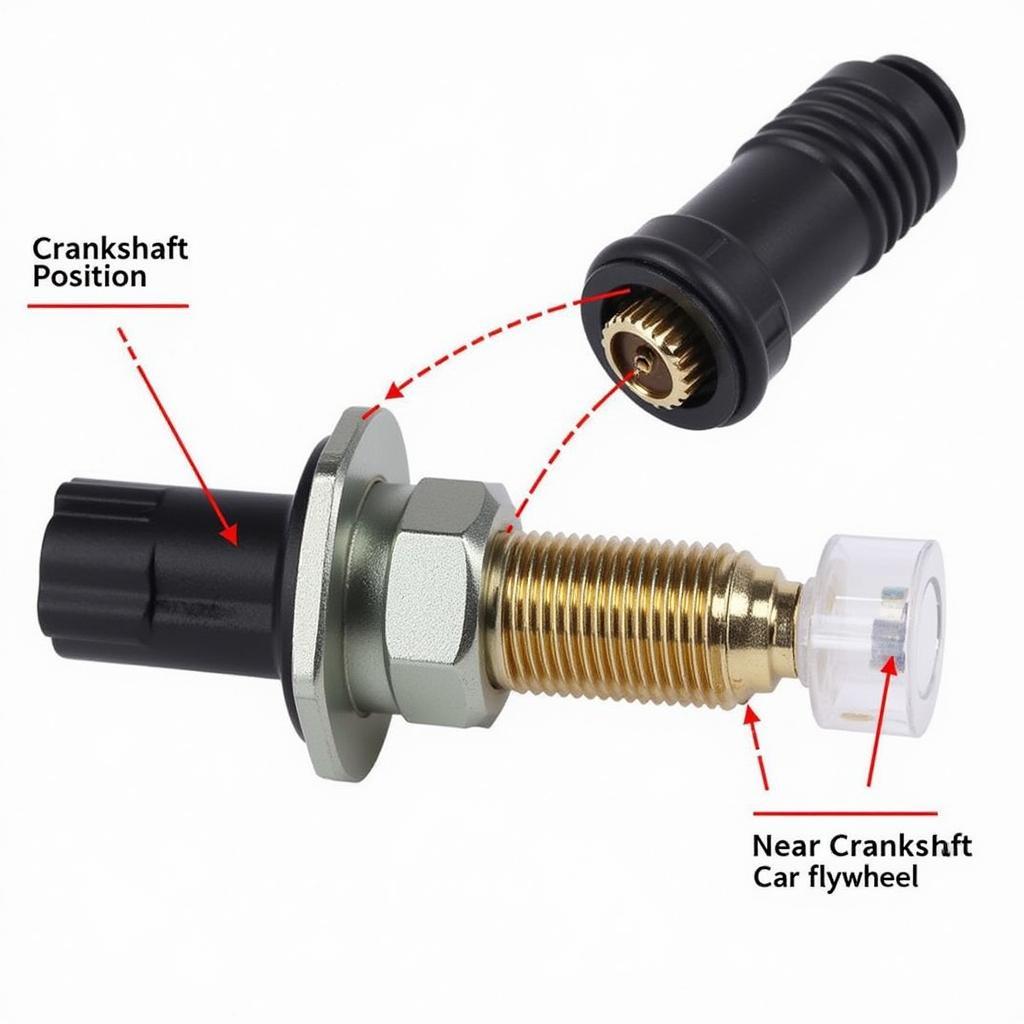Replacing your Passat B6’s rear brake pads is a job you can tackle yourself with the right tools and guidance, especially with the help of VCDS (Vag-Com Diagnostic System). This guide will walk you through the process, offering tips and tricks along the way, leveraging the power of VCDS for a smoother and more efficient brake pad replacement.
Understanding the Importance of Rear Brake Pad Replacement
Worn brake pads compromise your safety, increasing stopping distances and potentially leading to brake failure. Regular inspection and timely replacement are crucial. Knowing when to replace your Passat B6’s rear brake pads is essential for maintaining optimal braking performance and safety. Ignoring worn brake pads can lead to more extensive and costly damage to your braking system.
Gathering Your Tools and Materials for the Passat B6
Before you begin, gather all the necessary tools and materials. This includes new rear brake pads specifically designed for your Passat B6, brake cleaner, a brake caliper piston compression tool, a jack and jack stands, a torque wrench, and of course, your VCDS cable and software.
 Passat B6 Rear Brake Pad Replacement Tools
Passat B6 Rear Brake Pad Replacement Tools
Preparing Your Passat B6 for Rear Brake Pad Replacement
Park your Passat B6 on a level surface, engage the parking brake, and chock the front wheels for safety. Using VCDS, access the Electronic Parking Brake (EPB) system and retract the rear calipers into service mode. This crucial step simplifies the process of compressing the caliper pistons.
Step-by-Step Guide to Replacing Rear Brake Pads on a Passat B6 with VCDS
- Lift and secure the vehicle: Jack up the rear of the car and securely place it on jack stands.
- Remove the wheels: Remove the rear wheels to access the brake calipers.
- Retract the caliper piston: Using the caliper piston compression tool, rotate and compress the piston back into the caliper. VCDS helps ensure the EPB system is disengaged, making this step easier.
- Remove the old brake pads: Once the piston is retracted, remove the retaining clips and slide the old brake pads out.
- Install the new brake pads: Install the new brake pads, ensuring they are correctly seated in the caliper.
- Reassemble the caliper: Reinstall the retaining clips and any other hardware you removed.
 Passat B6 Rear Brake Pad Installation using VCDS
Passat B6 Rear Brake Pad Installation using VCDS
- Release the parking brake through VCDS: After the mechanical work is complete, use VCDS to release the parking brake from service mode. This will properly adjust the calipers and ensure optimal braking performance.
- Reinstall the wheels: Mount the wheels back onto the car and tighten the lug nuts to the specified torque.
- Lower the vehicle: Carefully lower the vehicle from the jack stands.
- Test the brakes: Before driving, pump the brakes several times to ensure they are firm.
VCDS and Brake Pad Replacement: Why it Matters
Using VCDS during this process makes retracting the caliper pistons significantly easier and ensures the electronic parking brake is properly calibrated after the replacement. Skipping this step can lead to uneven brake pad wear and potential damage to the EPB system. “Using VCDS is not just a convenience, it’s essential for maintaining the integrity of your Passat B6’s braking system,” says Michael Schmidt, ASE Certified Master Technician.
Common Issues and Troubleshooting
Sometimes, you might encounter issues during the process. If the caliper piston is difficult to compress, ensure the EPB is fully retracted in service mode via VCDS. “Double-checking your VCDS connection and ensuring you’re using the correct procedures within the software is paramount,” adds Maria Sanchez, Lead Diagnostic Technician at CARDIAGTECH.
 Passat B6 Rear Brake Pad Replacement VCDS Troubleshooting
Passat B6 Rear Brake Pad Replacement VCDS Troubleshooting
Conclusion
Replacing the rear brake pads on your Passat B6 with the aid of VCDS is a manageable DIY project. Following these steps and using VCDS correctly ensures proper brake function and contributes to your safety on the road. Remember to consult your vehicle’s service manual for specific torque specifications and always prioritize safety.
FAQ
- Do I need VCDS to replace rear brake pads on a Passat B6? While not strictly required, VCDS greatly simplifies the process, especially with the electronic parking brake.
- Can I damage my car by using VCDS incorrectly? While unlikely, it’s important to follow instructions carefully.
- What are the signs of worn brake pads? Squealing brakes, reduced braking performance, and a low brake pedal are common indicators.
- How often should I replace my brake pads? Brake pad lifespan varies, but inspection every 10,000-15,000 miles is recommended.
- What should I do if my brakes still feel spongy after replacing the pads? This could indicate air in the brake lines, requiring bleeding.
- Can I use any brake pads on my Passat B6? Always use pads specifically designed for your model year and trim level.
- Where can I find more information on using VCDS? Online forums and the official Ross-Tech website are excellent resources.
Need Further Assistance?
Contact us via Whatsapp: +1 (641) 206-8880, Email: CARDIAGTECH[email protected] or visit us at 276 Reock St, City of Orange, NJ 07050, United States. We have a 24/7 customer support team ready to assist you. Check out our other articles on brake maintenance and VCDS usage for more helpful information.

